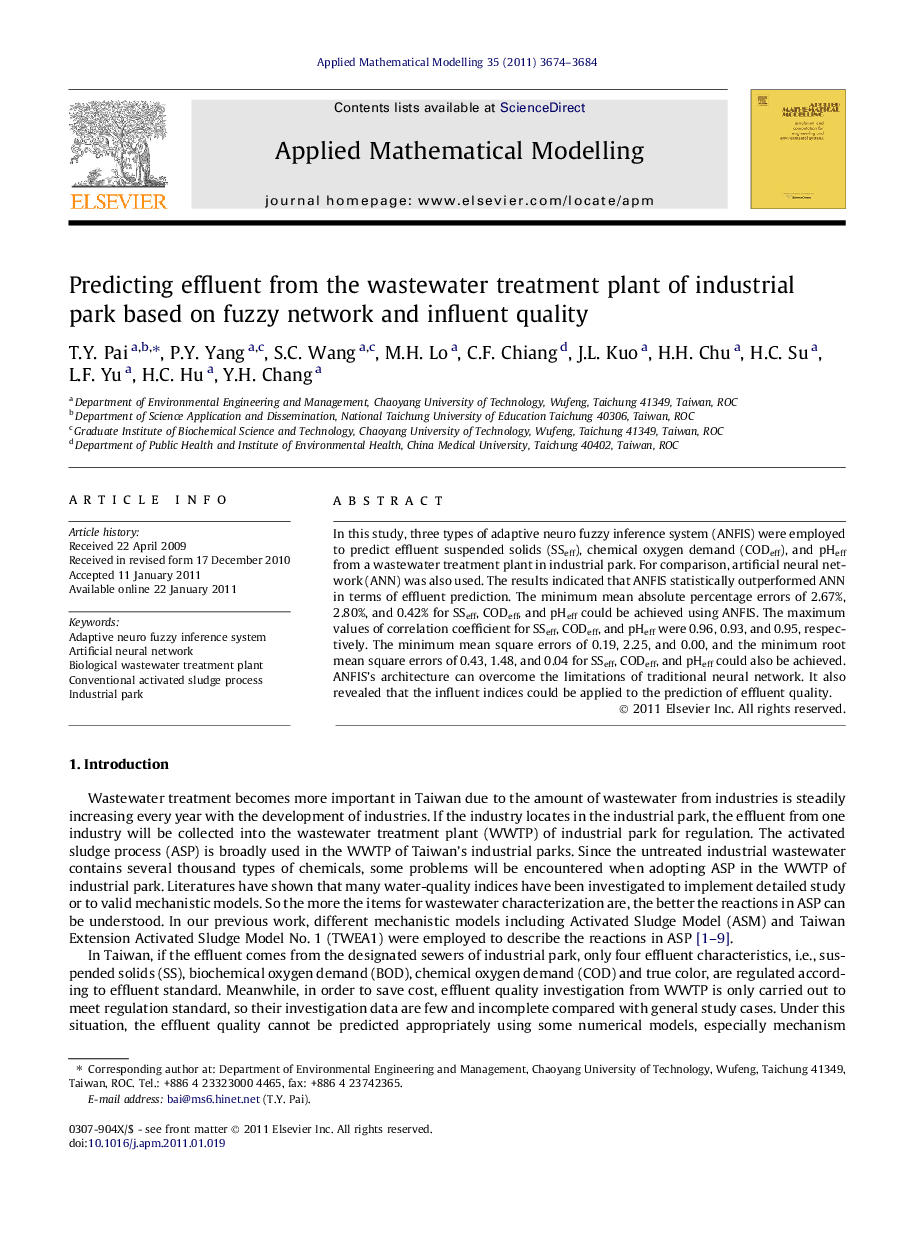| Article ID | Journal | Published Year | Pages | File Type |
|---|---|---|---|---|
| 1706369 | Applied Mathematical Modelling | 2011 | 11 Pages |
In this study, three types of adaptive neuro fuzzy inference system (ANFIS) were employed to predict effluent suspended solids (SSeff), chemical oxygen demand (CODeff), and pHeff from a wastewater treatment plant in industrial park. For comparison, artificial neural network (ANN) was also used. The results indicated that ANFIS statistically outperformed ANN in terms of effluent prediction. The minimum mean absolute percentage errors of 2.67%, 2.80%, and 0.42% for SSeff, CODeff, and pHeff could be achieved using ANFIS. The maximum values of correlation coefficient for SSeff, CODeff, and pHeff were 0.96, 0.93, and 0.95, respectively. The minimum mean square errors of 0.19, 2.25, and 0.00, and the minimum root mean square errors of 0.43, 1.48, and 0.04 for SSeff, CODeff, and pHeff could also be achieved. ANFIS’s architecture can overcome the limitations of traditional neural network. It also revealed that the influent indices could be applied to the prediction of effluent quality.
